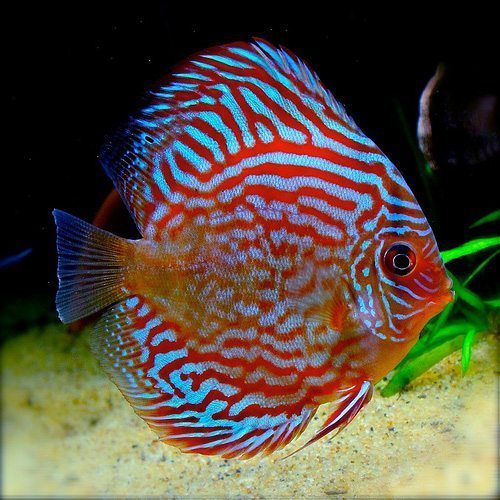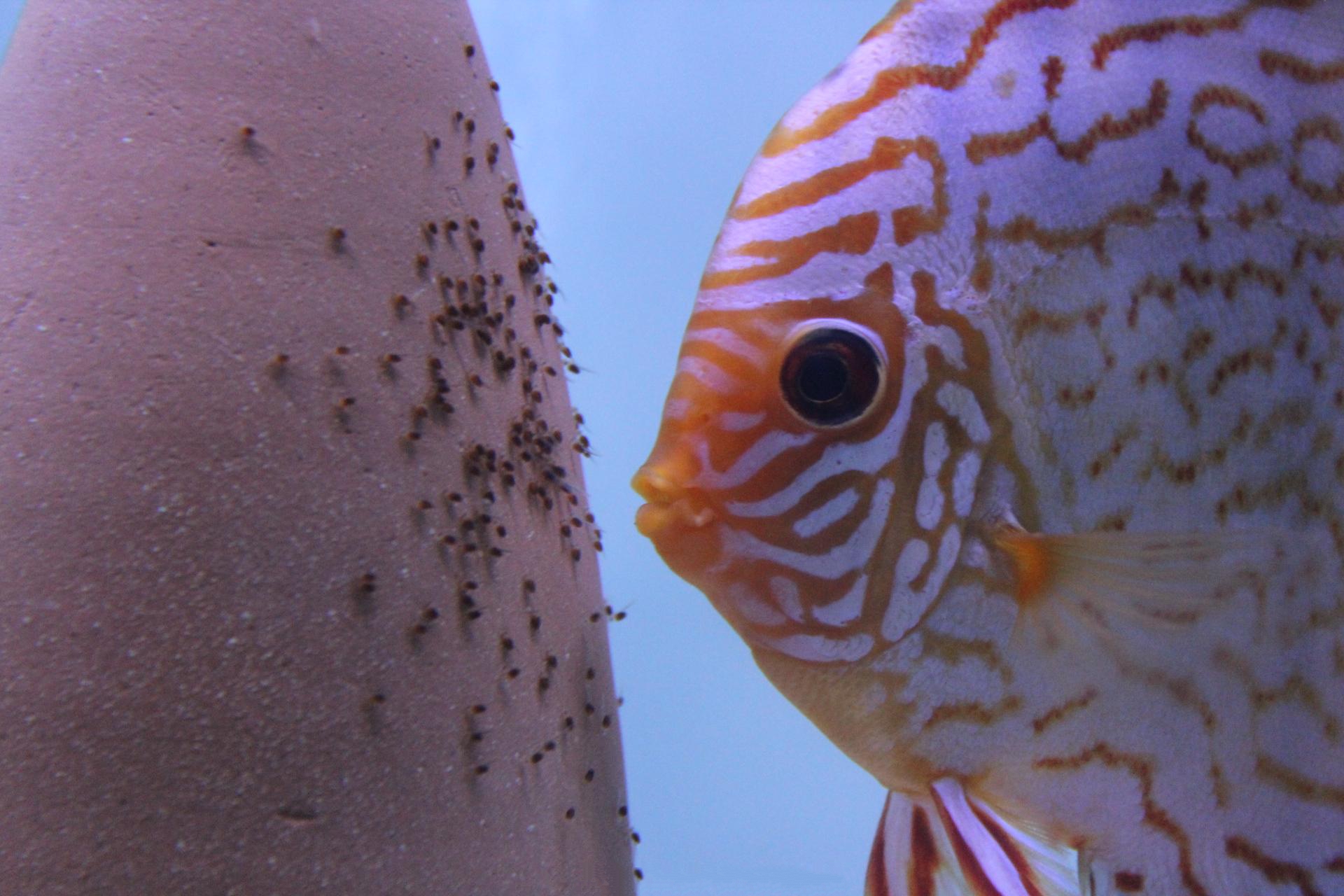


This color form is also called Red Heckel Discus, Blue Heckel Discus, and Blue Head Discus. It is considered to be one of the most beautiful discus. The Red Discus has a reddish brown background, faint blue horizontal stripes, and red edges on the fins. There are two popular varieties of Heckel Discus: Juveniles have a body coloration that is a dull brown. The Heckel Discus are distinguished from other discus by their wide black 1st, 5th, and 9th bars, called the "Heckel bars", that run through the eye, the center of the body, and the base of the tail. The Heckel Discus have an almost circular body accented with nine vertical stripes. They can get up to about about 8 inches (20 cm) in length and are the most laterally compressed (flattened) of all the cichlids. IUCN Red List: NE - Not Evaluated or not listedĭiscus are relatively large disc shaped cichlids.They feed on insect larvae, insects, and planktonic invertebrates. They live in the still or slow moving waters along the banks where they hide among tangled roots and branches. They inhabit places where the water is quiet and heavily planted. Other common names they are known by are Pompadour Fish, Pineapple Discus, Red Discus, Red Heckel Discus, Blue Heckel Discus, and Blue Head Discus. This species is not listed on the IUCN Red List. They are native to South America, originating from Brazil in the Rio Negro, Rio Trombetas north of the Amazon, and from the Rio Abacaxis south of the Amazon. The Heckel Discus Symphysodon discus was described in 1840 by Dr. Coldwater Fish - Looking for cold water fish? (65 °).Similar size fish - Fish that are 1 inch bigger or smaller.Community Fish - Peaceful Freshwater fish.Beginner Fish - Freshwater fish for beginners.For Information on keeping freshwater fish, see:įreshwater Aquarium Guide: Aquarium Setup and Care Because of this, it is recommended that they only be kept by experienced aquarists. But many experienced aquarists considered the Heckel Discus to be more difficult to care for than even wild caught S. The tank bred specimens are much hardier than wild caught specimens and so require a bit less care. The most commonly available discus are the tank bred varieties of Green Discus S. Provide a soft substrate with some roots or rocks.ĭiscus can be rewarding to keep for experienced aquarists that are observant and diligent in providing care. This species comes from slightly warmer water than the other discus, though like the others they prefer a lightly planted aquarium with subdued lighting. They do best in pairs or groups of pairs and should not be kept singly.

Heckel Discus are peaceful, shy cichlids. Males breed more easily than females however, so they have been bred with other species to create a variety of hybrids. They are also more difficult to breed, and so most of the available fish are generally wild caught. The Heckel Discus is a more delicate species than the other two and are the least popular due to their difficult care.

There is also a third species, the Blue Discus or Brown Discus Symphysodon haraldi, that is recognized but awaiting further work to determine its identification and validation. Both of these species are found in the central and lower Amazon regions. Altogether there are three acknowledged Discus species, including another longtime favorite the Green Discus Symphysodon aequifasciatus. The Heckel Discus was described in 1840 by Dr. These fish have been identified since the mid part of the 19th century, making them one of the oldest residents of the aquairum hobby. In this red form they are considered to be one of the most beautiful of all naturally occurring discus. In addition to the normal form, there are beautiful red colored specimens that are called Red Discus, Red Heckel Discus, Blue Heckel Discus, or Blue Head Discus. Other discus also have bars in their natural forms, but only the Heckel Discus displays a broad dark central bar. One bar runs through the eye and another through the caudal fin, but the most prominent bar runs down the center of the body. They were the first discus to be discovered and can be readily distinguished from other discus types by their three bold vertical bars. The Heckel Discus Symphysodon discus, also known as the Pompadour Fish and the Pineapple Fish, is an elegant, graceful cichlid.


 0 kommentar(er)
0 kommentar(er)
